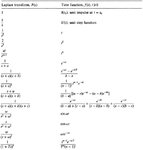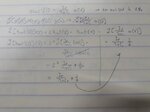promach
Advanced Member level 4
I am reading on the section on derivation of closed-loop transfer function of the type-II PLL
I found that expression (9.14) is not the differentiated version. It should have the apostrophe ( ' or ') character to imply that it is the result of differentiating Eq. (9.13) with respect to time
In this case, I really suspect if expression (9.15) is correct or not since H(S) = (9.14) * (Kvco / s) / (1 + (9.14) * (Kvco / s) )
Could anyone suggest if I overlook something ?
Note: The book screenshots below are from Razavi "RF microelectronics" 2nd edition



I found that expression (9.14) is not the differentiated version. It should have the apostrophe ( ' or ') character to imply that it is the result of differentiating Eq. (9.13) with respect to time
In this case, I really suspect if expression (9.15) is correct or not since H(S) = (9.14) * (Kvco / s) / (1 + (9.14) * (Kvco / s) )
Could anyone suggest if I overlook something ?
Note: The book screenshots below are from Razavi "RF microelectronics" 2nd edition





